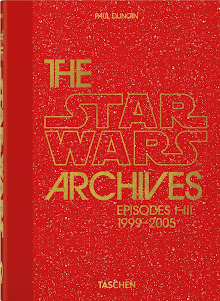 |
| Capturing escapist truth and beauty through the camera- UK film cinematographer Alec Mills. Image: The History Press. |
SHOOTING
007 AND OTHER CELLULOID ADVENTURES
By Alec
Mills
Foreword
by Sir Roger Moore
Published
by The History Press
Reviewed by Scott
Weller
“Knowing Alec, I can safely promise you a good read,
and I always tell the truth.”
Roger Moore
There are many
reasons why British film industry technical talent is regarded as the finest in
the world. And famed cinematographer Alec Mills is one of them!
Best known for his
involvement and vital contributions to some of the most popular films of the
seventies and early eighties, most notably from the James Bond and Classic STAR
WARS saga, Mills, in a lengthy career that would seem him handle everything
from his first youthful and enthused clapperboard duties to learning the craft
of becoming a seasoned visual renderer, would easily earn his title as one of
the most popular and respected people of his ilk in the fantasy-making aspects
of cinematography, helping to launch Roger Moore’s broad James Bond era into colourful,
humorous, exciting fun, whilst, at the other end of the scale, and in a galaxy
far, far away and a long time ago, subtly moving Return of the Jedi towards its
vital climatically dark thrill ride, making it all the more thrilling and immersive
to watch.
A subtle and
caring person with a fine eye for detail, research and continuity, as well as a
pioneer in many areas, especially knowing how to work as part of a team in his
varied jobs but also, where necessary, not afraid to let his views be known
when critically needed, Mills, through contacts and sheer bloody hard work,
would truly become a part of the golden age of cinema – American, International
and often hard-bitten UK endeavours. Lured by the siren-like glamour, adventure
and fantasy bug of celluloid at an early age, his youthful post World War II
entering of the British film industry soon saw a quiet but solid advancing up
the career leader in working with some of the biggest and brightest names in
the UK industry, soon proving a vital and worthy way of building his craft- from
his stints in moody and atmospheric black and white to glorious, extravagant
colour, from the large to the small screen, travelling countries and climes as
diverse as Austria to Japan, and learning from the likes of long time Cameraman/Cinematographer
legend buddies/partners in cinematic magic capturing including Michael Reed,
Jack Cardiff and Alan Hume, Mills unique relationship with the camera, and the
mystical quality of film running through it, is a genuine, if not always
perfect, love affair.
Shooting 007 and Other Celluloid Adventures, his newly released autobiography via The
History Press, paints a clear, concise and honest picture (sometimes warts and
all!) of the important mark Mills contributes to populist motion picture storytelling
history. Some of the 007 anecdotes, about the family feeling of the franchise
created by Albert R. Broccoli, and Mills constant “humorous” sparring with
prankster star Roger Moore, may not necessarily be fresh, but there are many
other glamorous, and not so glamorous projects made in and around them,
previously unknown and unrevealed, that prove equally worthy- cherished
insights and observations on well-known actors (like the infamous boozy legend
that was Oliver Reed, gritty action hero (in reality and fantasy) Lee Marvin
and stalwart super-bitch and all-round tough cookie Bette Davis, plus
charismatic, often chilly or eccentric directors, including Franklin Schaffner,
John Guillermin and Roman Polanski. Its here, in these outer chapters, that Mills
also evokes his true duties and responsibilities to a time, place and era in
filmmaking that will never be seen again, showing us the importance of hard
work and dedication, and how, if not always quickly, it can pay off later down
the line. STAR WARS fans, in particular, will not only relish the chapter
detailing his time working on the ambitious, on set secrecy-shrouded final
episode of the Original Trilogy with Return
of the Jedi- the happiness yet ensuing nightmares of disagreeing/dealing
with a resentful senior LUCASFILM staffer, but also director Richard Marquand’s
previous evocative directorial effort, the one that ultimately got him into the
attention sights of George Lucas in the first place: the much under-rated World
War II thriller Eye of the Needle, of
which Mills reminisces are clearly a more positive if smaller-scale experience.
Beyond the tales
of the good and the bad, the gentlemanly Mister Mills, a champion of the values of teamwork and loyalty, also shows his serious side when it comes to his
craft, importantly revealing intriguing tricks and magic of the film-making trade which are now sadly passing into the ether with the arrival of CGI. It's information that historians, and
especially students/rising star visualists trying to break into this difficult
medium of entertainment, would be wise to remember and keep inside this mini equivalent of a film-school education.
Backed up by some
very rare behind the scenes photos, especially of interest to Bond aficionados, Mills trip down the
cobbled but incident-packed streets of Memory Lane- the ensuing personal
hardships, friendships, battles and victories making their mark- is a well-written
and incident packed endeavour, with some personal demons and insecurities over
his contributions to film and TV thankfully exorcised. (Oh, and speaking of the
supernatural, watch out for the chapter about his "house guest"!)
AFICIONADO
RATING: Never has the phrase “They don’t make ‘em like they used to” been more
apt with this book. 3.5 out of 5
Get hold of the
book here: http://www.thehistorypress.co.uk/index.php/shooting-007.html








































































































No comments:
Post a Comment